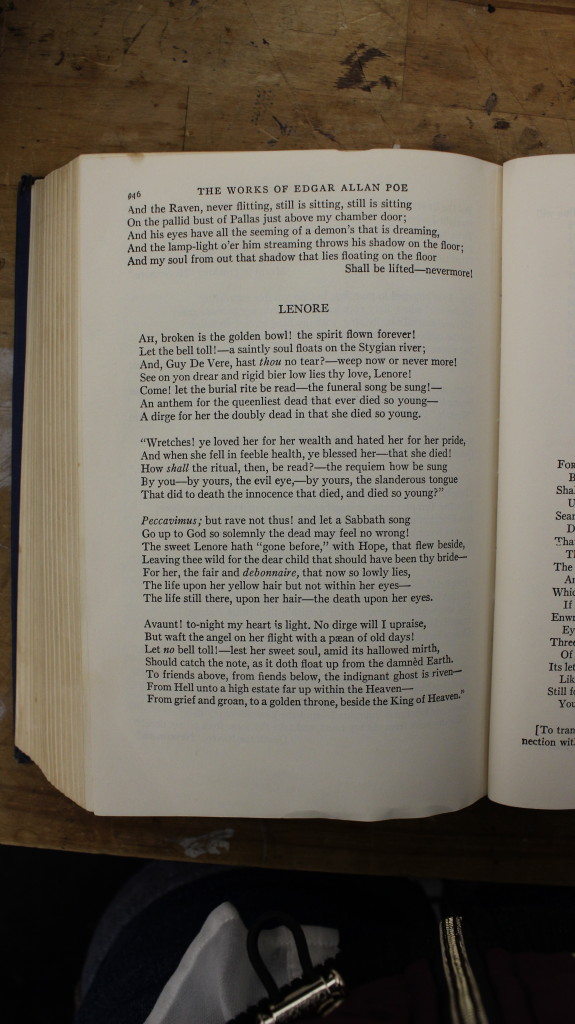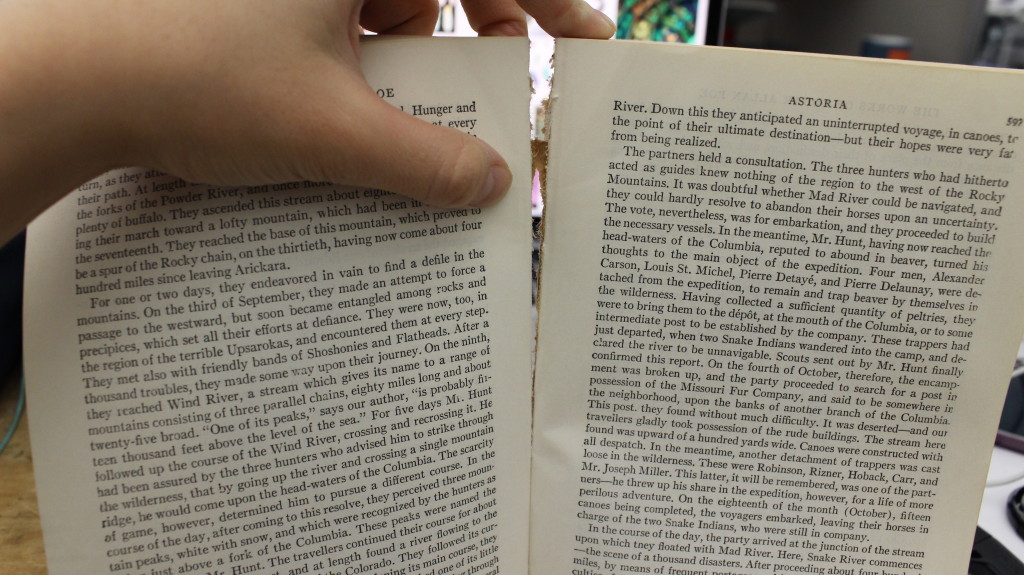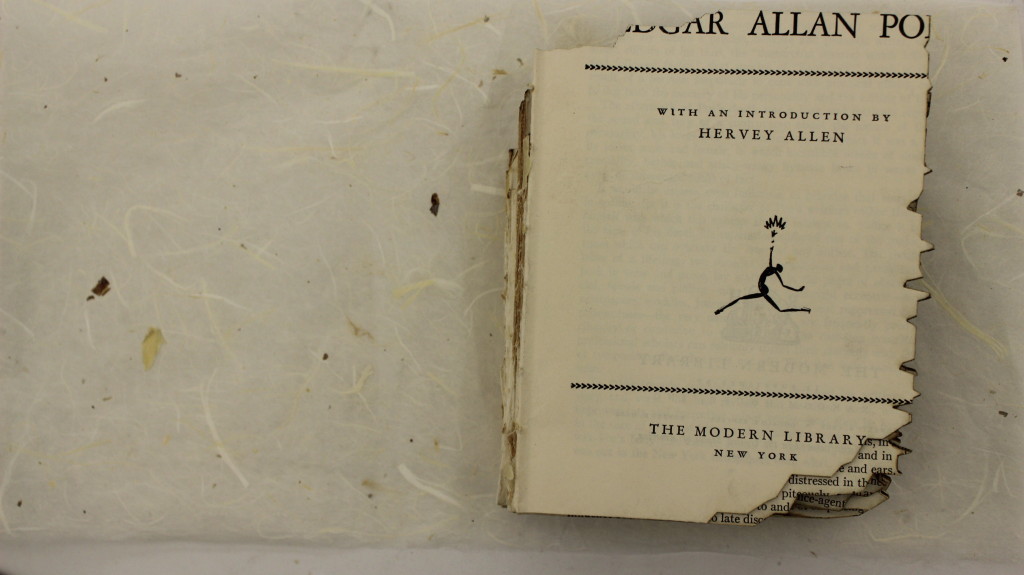Miri – Final : Poetry Analysis Sculpture
This project is a continuation of my previous project in analyzing poetry into data and using the numeric output as input into a sculptural object. As per the suggestion of peers, I went to Strand to buy a bunch of old books on sale that I wouldn’t feel too bad about having to partially destroy.
The book I settled on using as my medium was “The Complete Tales and Poems of Edgar Allan Poe” and the poem of my focus was found on pgs 943- 947, The Raven.
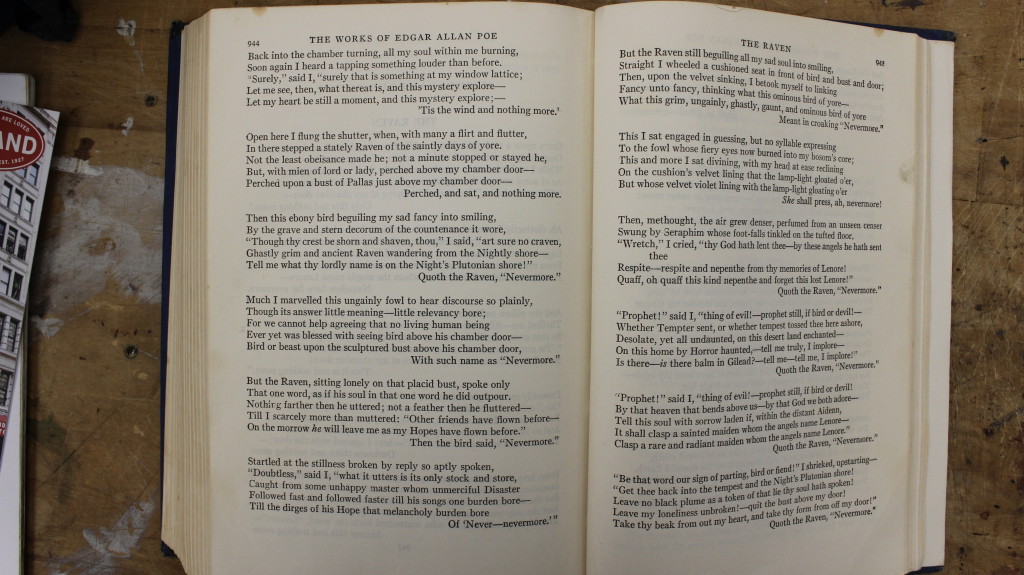
I went to work in analyzing literary elements of the poem, focusing on elements that make for structural composition. For reference I found the poedecoder helpful, and The Philosophy of Composition by Edgar A. Poe himself.

In the aforementioned book, Poe writes: “I select “The Raven,” as most generally known. It is my design to render it manifest that no one point in its composition is referrible either to accident or intuition — that the work proceeded, step by step, to its completion with the precision and rigid consequence of a mathematical problem.” This point was perfect in how I wanted to approach the analysis as a breakdown of numbers.
I preferred to carry out this process of data creation manually.
The poem consisted of 108 Lines, 6 lines per stanza, and 18 stanzas. The book also happened to be bound in 18 packets of paper. I decided to keep that number 18 as the amount of contained shapes I would cut, and do a per stanza analysis, focusing on rhyme scheme, alliteration, and repetition. Rhythm: 16,15,16,15,15,7 syllables
The completed dataset looked something like this, but 9 times as long (from stanza 1 – 18)
The full dataset is attached on the bottom of the post, as well as the data that determined how to assign numerical value. The alliteration was compared against categories of phonology, what kinds of sounds make harsher or smoother noises in regards to how we obstruct and allow air and sound to flow through our mouths. As for repetition, I kept a count on how many times certain words or phrases are repeated in the poem, as well as how many syllables it consists of. Then I divided the syllable count from the repeated amount, and let the graph represent those values in an additive way (hence, the repetition never drops down, only goes up by a certain increment, and then resets each start of stanza).
I then took that dataset into processing and visualized the data in lines.
Then, I took those three lines that compose each stanza shape and arranged it so that the top part of the page from left to right shows alliteration (the most drastic sloping shape), the top to down edge of the page shows rhyme scheme (as you would typically find the rhyme on the ending syllables of lines within a stanza), and the bottom part of the page from left to right shows the repetition.
The bird shape was designed as the book cover. I took the output of the data as the guide to the shape (making sure to avoid the other way around. I didn’t want a preconception of a shape to guide the data).
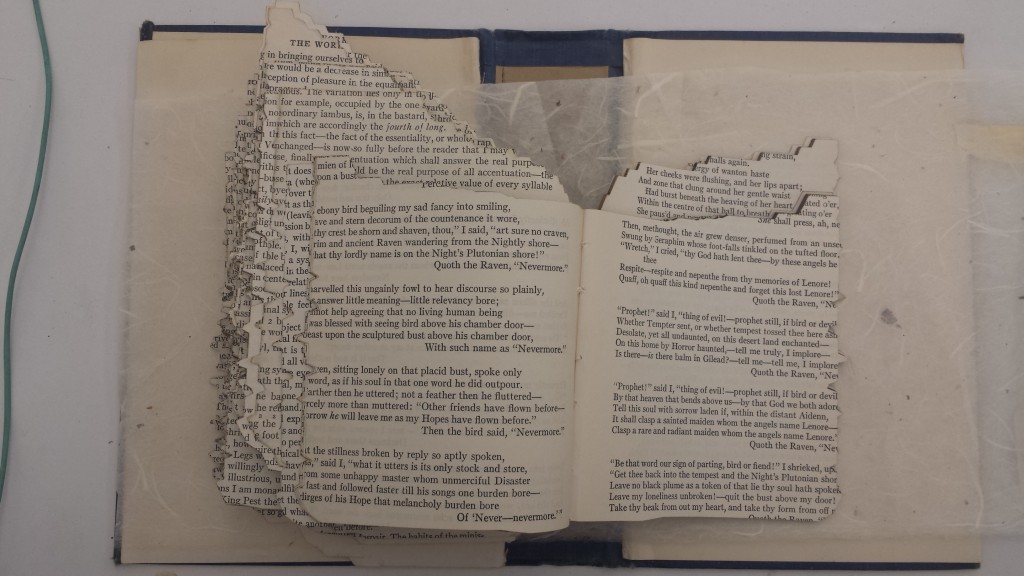


I laser cut all 18 layers of the book as well as the book cover and bound them back up.

And let the bird book live in the library next to its kin for a while.

poe_repetition_data_valuespoe_
raven_edgarAllanPoe_dataset_numericalOutput



